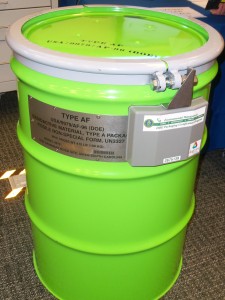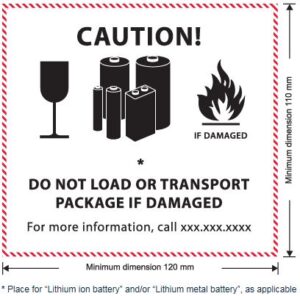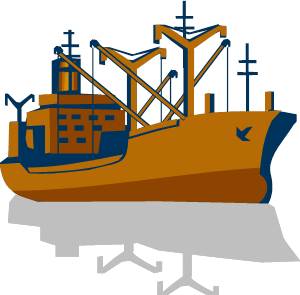Each year the Dangerous Goods Regulations of the International Air Transport Association are published anew. That means that when the ball drops on 12.31.15 any copies of the 56th Edition of the Dangerous Goods Regulations are worthless and must be replaced by the 57th Edition which will be in effect for calendar year 2016.
I just bought mine on-line from Air Sea Containers, Inc. Take my advice and pay the few extra bucks for the spiral bound copy as it lies flat and is easier to work with.
I have summarized below the significant changes from the 56th to 57th Editions published by IATA. For the full IATA publication read Significant Changes and Amendments to the 57th Edition (2016).
- Section 1 – Applicability
- 1.3.3 – Dangerous Goods in Consolidations has been slightly revised and a definition of “consolidation” added.
- Section 2 – Limitations
- 2.3 – Dangerous Goods Carried by Passengers or Crew has been revised regarding portable electronic devices, including medical devices containing lithium batteries and spare batteries:
- Portable oxygen concentrators (POC) are specifically referred to as a portable medical electronic device (PMED).
- The list of portable electronic devices (PED) has been revised to include reference to more common items, including power banks, which must be treated as spare lithium batteries
- Table 2.3.A has been restructured:
- Items are now listed in alphabetical order.
- Columns for qualifying conditions applicable, approval of the operator, permitted in checked baggage, carry-on baggage and information to the pilot-in-command, moved to right side of table to improve readability.
- 2.8 – State and Operator Variations:
- State variations revised by France.
- State variations now submitted by Nepal and Venezuela.
- Many additions, deletions, and amendments to operator variations.
- 2.3 – Dangerous Goods Carried by Passengers or Crew has been revised regarding portable electronic devices, including medical devices containing lithium batteries and spare batteries:
- Section 5 – Packing
- 5.0.1.3 identifies the few dangerous goods that are allowed to be shipped in freight containers and unit loa

A unit load device used by UPS d devices. The list of excepted dangerous goods has been expanded and revised to align the list and format to 9.1.4 – Acceptance of Freight Containers and Unit Load Devices.
- 5.0.1.5 has been expanded to include an additional paragraph to clarify that an overpack of dangerous goods may also contain non-dangerous goods.
- 5.2.0.6 Packing instructions for Class 2 – Gases has been revised to move the content of 5.2.0.6 regarding filling limits for cylinders to Packing Instruction 200.
- 5.0.1.3 identifies the few dangerous goods that are allowed to be shipped in freight containers and unit loa
- Packing Instructions
- PI Y963 Packing instructions for ID 8000, Consumer commodities has been revised to add text identifying substances that are permitted to be classified as ID 8000 and to state that other dangerous goods must not be packed in the same outer packaging with consumer commodities.
- PI 965 through PI 970 Packing instructions for lithium ion, lithium metal, or lithium polymer cells and batteries that are shipped alone, with equipment, or in equipment has been revised to require the outer packagings to be rigid. Changes have also been made to the permitted packagings table for each.
- PI 966 and PI 969 Packing instructions for lithium batteries packed with equipment (UN 3481 or UN 3091) has been revised to clearly identify what is meant by “equipment”. The same clarifying text has been added to PI 967 and PI 970.
- PI 967 and PI 970 Packing instructions for lithium batteries contained in equipment has been revised to limit the exception from use of the lithium battery handling label on certain packages.
- 8 – Documentation
- 8.1.6.9.2 has had text added to clarify that it is acceptable to identify the number of packages on the Shipper’s Declaration of Dangerous Goods by use of number or words.
- 9 – Handling
- 9.4.4 has been revised to include recommendations on actions to take when packages with GHS markings are found to be damaged or leaking and there may be a risk to persons or the environment.
 10 – Radioactive Materials
10 – Radioactive Materials- 10.7.1.3 – the text of the requirement for packages to bear the permissible gross weight has been clarified.
- Appendix
- Appendix D – contact details for competent authorities has been updated.
- Appendix E – Changes have been made to the list of UN Specification Packaging Suppliers (E.1) and the Package Testing Facilities (E.2).
- Appendix F – The list of Sales Agents (F.2), IATA Accredited Training Schools (F.3-F.5) and IATA Authorized Training Centers (F.6) have been revised.
- Appendix H is new to the IATA Dangerous Goods Regulations. It has been added to provide details of changes to go into affect as of January 1, 2017 in the 58th Edition of the IATA Dangerous Goods Regulations. Changes include:
- Allowance for Shipper to classify a substance differently than shown in the List of Dangerous Goods if based on testing and approved by the National Authority.
- Inclusion into Division 4.1 of classification criteria for polymerizing substances.
- The entries for “engines” currently assigned to UN 3166 have been assigned to new UN numbers: Division 2.1, Class 3, or Class 9; depending on the type of fuel or fuel cell. New packing instructions have been added for these entries.
- A number of new and modified special provisions.
- Replacement of the existing lithium battery handling label with a multi-modal lithium battery mark and the introduction of a new Class 9 label specifically for lithium batteries.
Contact me with any questions you may have about the transportation of hazardous materials by air, highway, vessel, or rail International and Domestic Daniels Training Services 815.821.1550 |
Below is a short YouTube video (just 5 minutes) prepared by IATA that summarizes these significant changes.
https://youtu.be/1fFQsx64TXU
If you ship dangerous goods by air IATA regulations at 1.5.0 require training every two year (biennial) for all Shippers and Packers of dangerous goods. Contact me to provide you with this training.





